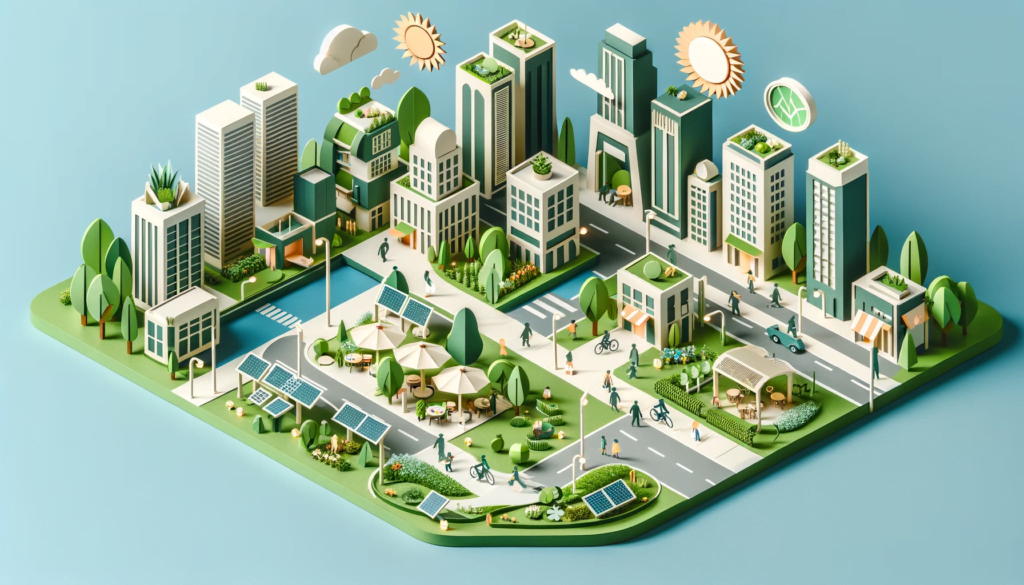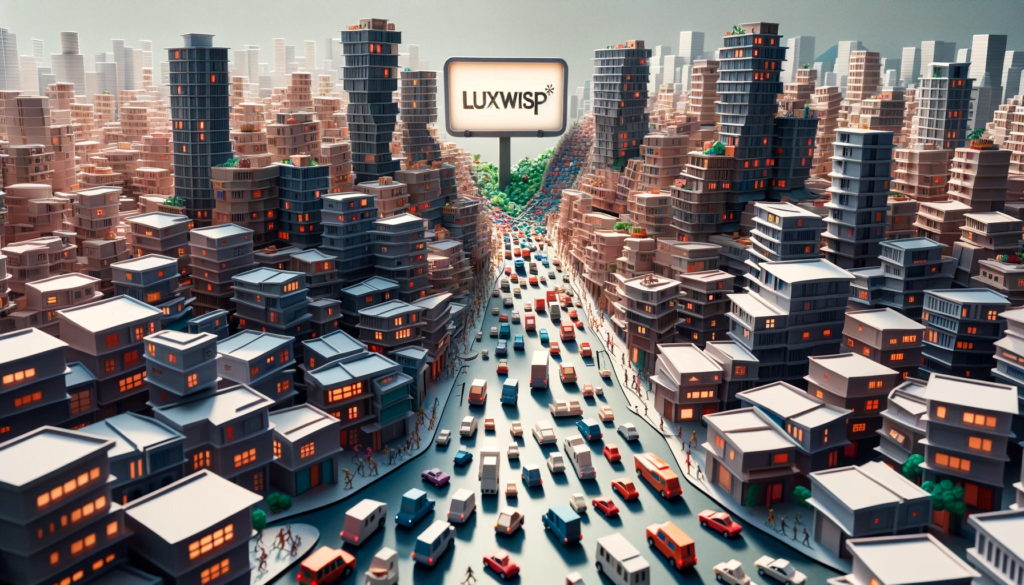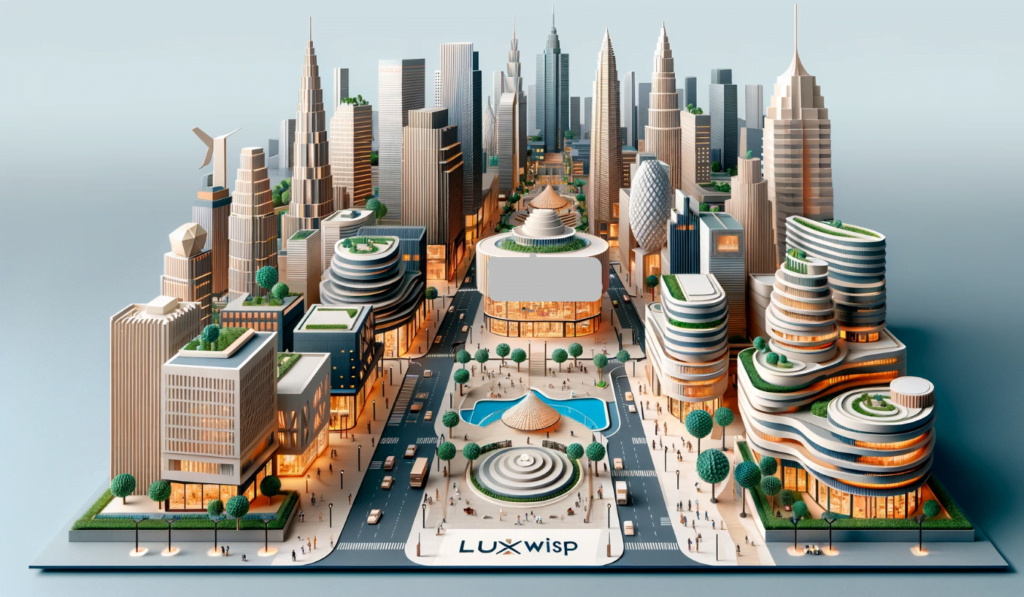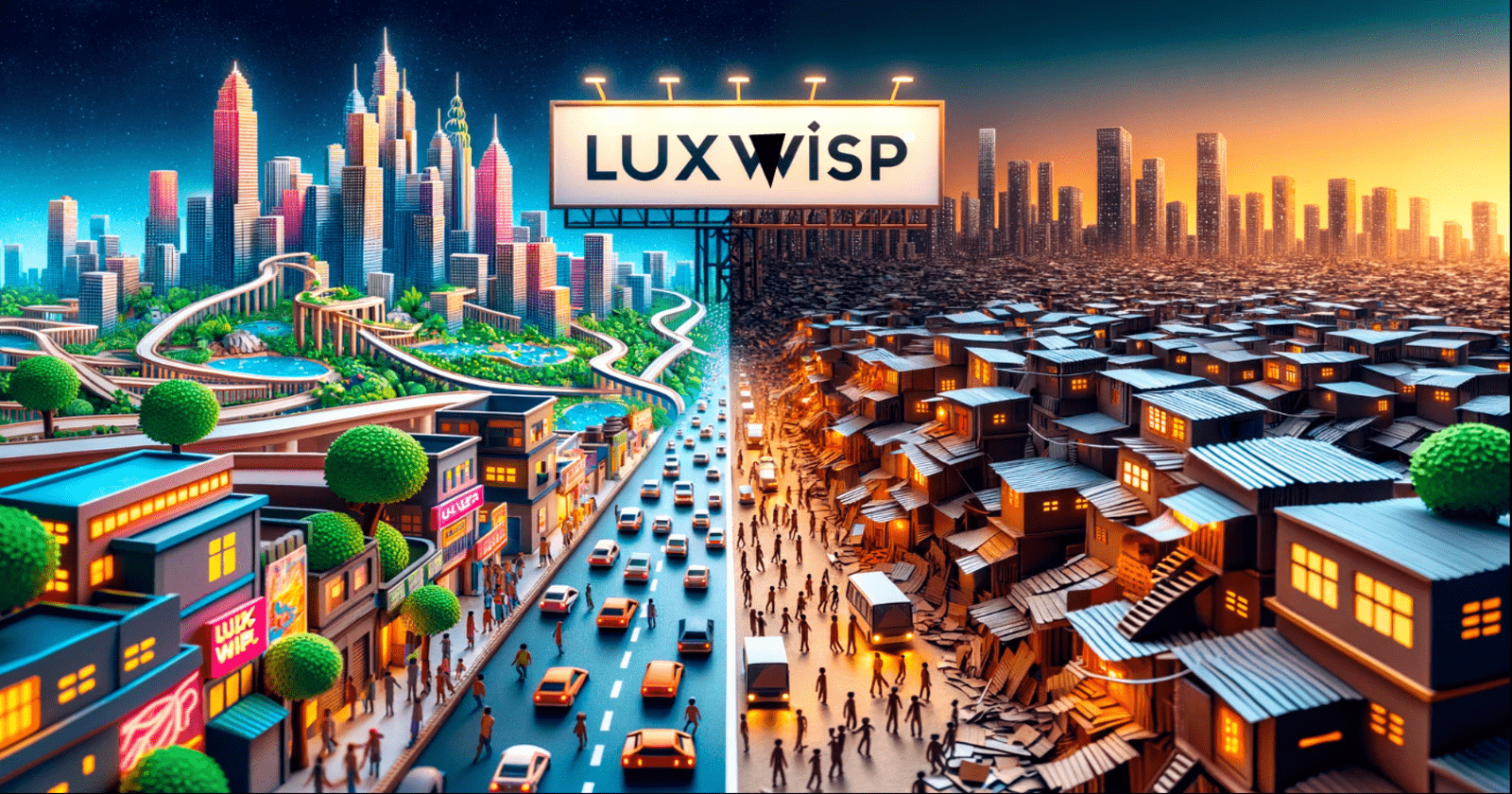The pros of urbanization are economic growth, increased access to education and healthcare, a more diverse cultural environment, increased trade, better investment opportunities, more livelihood options, foreign investment, reduced unemployment, and improved transportation facilities. These benefits contribute to a vibrant and progressive urban life, offering residents and businesses various advantages.
The cons of urbanization include overcrowding, traffic congestion, pollution, heightened social and economic inequality, increased living costs, resource conflicts, the decline of traditional industries alongside the rise of informal economies, and potential for increased crime, violence, and social unrest, often exacerbated by rapid, unplanned urban expansion. These factors can lead to a reduction in the quality of life and complex social and economic challenges in urban areas.
As dawn breaks over the skyline, cities worldwide wake to the hustle of progress and the hush of struggles.
This article peels back layers of urbanization, revealing how it fuels growth and innovation, yet taxes resources and communities.
From towering skyscrapers to the maze of streets below, we’ll explore the pros and cons of city life, where every advance comes with a cost, and each opportunity casts a shadow.
Urbanization Facts Sheet
- Global Urban Shift: Over half the world’s population (over 4.3 billion) live in urban areas, surpassing rural populations since 2007.
- Urbanization Rates: Global urbanization was 57% in 2022. In high-income countries, over 80% reside in cities, and 50% to 80% in upper-middle-income countries, while most in low to lower-middle-income countries remain in rural areas.
- Future Urban Growth: By 2050, urban dwellers are expected to be 70% of the world’s population, with over 60% of future urban land by 2030 still undeveloped.
- Asia and Africa Trends: Half of Asia’s population was urban by 2020, and Africa is projected to reach 50% urbanization by 2035.
- Historical Urbanization: The first city with a million inhabitants was Alexandria around 100 BCE.
- Urban-Rural Population Dynamics: The urban population exceeded rural in 2007.
- Urban Population Variance: Urban population shares varied across continents in 2022.
- Largest Urban Centers: In 2023, the largest urban areas were ranked by population.
- Rural Population Rankings: Countries were ranked by their lowest and highest rural population rates in 2022.
- Urban Migration and Industry: Shifts from rural to urban settings correlate with industrial development.
Key Takeaways:
- Urbanization offers better infrastructure, public transportation, and access to amenities like supermarkets.
- Cities provide diverse, quality educational opportunities and extracurricular activities.
- Urbanization boosts property values and housing variety, enhancing investment potential.
- City life allows for efficient time management with shorter commutes and quicker task completion.
| Pros of Urbanization | Cons of Urbanization |
|---|---|
| Economic Growth | Overcrowding |
| Access to Education and Healthcare | Traffic Congestion |
| Cultural Diversity | Air and Water Pollution |
| Trade and Economic Opportunities | Social and Economic Inequality |
| Investment Opportunities | Increased Cost of Living |
| Livelihood Opportunities | Greater Divide Between Rich and Poor |
| Foreign Investment | Conflict Over City Resources |
| Reduced Unemployment | Potential for Higher Crime Rates |
| Improved Transportation Facilities | Decline of Traditional Industries |
| Avoidance of Rural Decline | Rise of Informal Economies |
| Increased Global Influence | Increased Infrastructure and Service Costs |
| Innovation and Technology Advancements | Increased Competition for Jobs |
| Enhanced Social Services | Increased Violence and Social Unrest |
| Economic Diversification | Environmental Degradation |
| Global Connectivity | Strain on Public Services |
| Efficient Resource Use | Loss of Community and Cultural Identity |
| Attracting Talent | Housing Shortages and Real Estate Speculation |
| Improved Standard of Living | Displacement of Rural Populations |
| Catalyst for Modernization | Dependency on Technology and Modern Amenities |
| Networking and Collaboration Opportunities | Challenges in Sustainable Development |
Pros of Urbanization

- Economic Growth: Urbanization often leads to significant economic growth. As people move to cities, they bring diverse skills and create a demand for services and goods, stimulating local economies. This urban economic growth is evident in rapidly urbanizing countries, where cities become hubs for industries and services, driving national GDP growth.
- Access to Education and Healthcare: Cities typically offer better access to education and healthcare services. In urban areas, schools and hospitals are usually more numerous and better equipped than in rural areas. This increased access contributes to higher literacy rates and improved health outcomes for urban populations, as seen in countries with high urbanization levels.
- Cultural Diversity: Urban areas often boast a more diverse cultural environment. Cities attract people from various backgrounds, leading to a melting pot of cultures, languages, and traditions. This diversity enriches the urban experience and fosters a more inclusive society, as can be seen in metropolitan cities like New York or London.
- Trade and Economic Opportunities: Cities are often the epicenters of trade and commerce. The concentration of businesses and consumers in urban areas creates a dynamic environment for trade, both domestically and internationally. This is exemplified by major port cities like Singapore and Rotterdam, which have become global trade hubs.
- Investment Opportunities: Urbanization creates numerous opportunities for investment. As cities grow, there is a higher demand for infrastructure, real estate, and services. This demand attracts both domestic and foreign investors, contributing to the city’s economic development, as observed in rapidly expanding cities like Dubai and Shanghai.
- Livelihood Opportunities: The variety of jobs in urban areas is typically greater than in rural areas. Cities offer employment opportunities in sectors like technology, finance, and entertainment, which are less common in rural settings. This range of opportunities can lead to a better quality of life for many individuals, as seen in many urban success stories.
- Foreign Investment: Urbanization can attract more foreign investment. As cities grow, they become more attractive to international businesses looking for new markets or investment opportunities. This influx of foreign capital can boost local economies and create jobs, as evidenced in cities that have undergone significant urban development.
- Reduced Unemployment: Urban areas often have lower rates of unemployment than rural areas. The diverse economic activities in cities provide more job opportunities, reducing unemployment levels. This trend is noticeable in countries with high urbanization, where cities have become the primary source of employment.
- Improved Transportation Facilities: Urbanization usually leads to the development of better transportation facilities. Cities invest in public transport systems like subways, buses, and trams, making it easier for residents to commute. These improved transportation networks can be seen in urbanized cities like Tokyo and Berlin.
- Avoidance of Rural Decline: Urbanization can help prevent the decline of rural areas by reducing pressure on agricultural land and rural resources. As people move to cities, rural areas can focus on sustainable agriculture and conservation. This can lead to a more balanced development, as seen in countries that manage urban and rural growth effectively.
- Increased Global Influence: Urban areas often become centers of political and economic influence. Cities like Washington D.C., Beijing, and Brussels play significant roles in global affairs, hosting governments, international organizations, and embassies. This influence often translates into benefits for the country as a whole.
- Innovation and Technology Advancements: Cities are hotbeds for innovation and technological advancements. The concentration of universities, research institutions, and tech companies in urban areas fosters an environment conducive to innovation. Silicon Valley, for example, is a testament to how urbanization can spur technological growth.
- Enhanced Social Services: In cities, social services like welfare, counseling, and support groups are more accessible. This availability helps address social issues more effectively than in rural areas, where such services might be limited or nonexistent. Urban residents often benefit from these enhanced social support systems.
- Economic Diversification: Urbanization leads to economic diversification. Unlike rural areas, which may rely heavily on agriculture, cities diversify into manufacturing, services, and technology. This diversification creates a more resilient economy, capable of withstanding sector-specific downturns.
- Global Connectivity: Cities offer better connectivity to the rest of the world. Urban areas are usually well-connected through airports, seaports, and digital networks, facilitating global business and communication. This connectivity is crucial for modern economies and is a key feature of major cities worldwide.
- Efficient Resource Use: Urban areas can use resources more efficiently due to economies of scale. Services like water supply, energy, and waste management can be more effectively managed in a dense urban environment than in dispersed rural areas. This efficiency leads to a reduced per capita resource footprint.
- Attracting Talent: Cities have a magnetic effect on talent. They attract skilled professionals, artists, and academics, creating a dynamic and innovative environment. This concentration of talent can drive economic and cultural growth, as seen in creative hubs like Los Angeles or London.
- Improved Standard of Living: Urban residents often enjoy a higher standard of living. With access to a range of services, entertainment, and cultural activities, urban life can offer a more comfortable and engaging lifestyle compared to rural areas, as evidenced by the amenities available in developed cities.
- Catalyst for Modernization: Urbanization can act as a catalyst for a country’s modernization. The shift from rural to urban living often accompanies the transition from an agrarian to an industrial and service-based economy, paving the way for modern societal structures.
- Networking and Collaboration Opportunities: The density of urban areas facilitates networking and collaboration. In cities, individuals and businesses can easily connect and collaborate, leading to new ideas and partnerships. This environment is conducive to entrepreneurial ventures and creative projects.
Cons of Urbanization

- Overcrowding: As of the latest data, more than half of the world’s population now lives in urban areas, leading to severe overcrowding in many cities. This results in higher demand for housing, often outpacing supply, and contributes to the development of slums and informal settlements. Overcrowded urban environments can exacerbate issues like poor living conditions and health crises.
- Traffic Congestion: With urbanization, especially in areas where 50% to 80% of the population lives in urban settings, traffic congestion becomes a significant issue. This leads to longer commute times, increased stress for residents, and higher levels of vehicular emissions. In densely populated cities, the infrastructure often struggles to keep up with the growing number of vehicles.
- Air and Water Pollution: Urban areas, particularly where a high percentage of a country’s population is concentrated, tend to suffer from higher levels of air and water pollution. The concentration of industries, vehicles, and large populations in small areas exacerbates environmental degradation. This pollution poses significant health risks and contributes to global environmental issues like climate change.
- Social and Economic Inequality: Urbanization can widen the gap between the rich and the poor, especially in cities where over 80% of a high-income country’s population might reside. Wealth and resources are often unevenly distributed in urban areas, leading to stark contrasts between affluent neighborhoods and impoverished slums.
- Increased Cost of Living: In many urban areas, the cost of living is significantly higher than in rural regions. This can be attributed to higher housing prices, the cost of services, and the general demand for resources in areas with dense populations. For low to middle-income families in these cities, affording basic necessities can become a challenge.
- Greater Divide Between Rich and Poor: Urbanization often exacerbates the divide between socioeconomic classes. In cities where the majority of the population resides, such as those in high-income countries, the disparity in income and living standards between the wealthiest and poorest residents can be quite pronounced.
- Conflict Over City Resources: As urban populations grow, the competition for resources like water, electricity, and public services intensifies. This is particularly evident in cities with rapid urbanization rates, where infrastructure development cannot keep pace with population growth.
- Potential for Higher Crime Rates: Urban areas, with their dense populations, can experience higher rates of crime. The anonymity of large cities, combined with socioeconomic disparities, often contributes to higher incidences of theft, vandalism, and other crimes.
- Decline of Traditional Industries: The shift towards urban living can lead to the decline of traditional rural industries. As more people move to cities, rural areas, particularly in lower-middle-income countries, may face a decrease in agricultural productivity and a loss of traditional crafts and industries.
- Rise of Informal Economies: In many urban areas, especially in developing countries, there is a significant rise in informal economies. These unregulated sectors often lack legal protections and benefits, leading to exploitation and insecure employment for many urban dwellers.
- Increased Infrastructure and Service Costs: The concentration of populations in urban areas leads to increased costs associated with infrastructure and services. Cities must invest heavily in maintaining and upgrading transportation systems, utilities, and public services to meet the demands of growing populations.
- Increased Competition for Jobs: With more people living in urban areas, the competition for employment becomes fiercer. This is especially challenging for new entrants to the job market and can lead to higher unemployment rates or underemployment in cities.
- Increased Violence and Social Unrest: Rapid and poorly planned urbanization can contribute to social unrest and increased violence. The strain on resources, coupled with economic and social disparities, can lead to tensions and conflicts within urban populations.
- Environmental Degradation: Urbanization often leads to significant environmental degradation. The removal of green spaces for development, pollution, and the urban heat island effect are some of the environmental consequences of densely populated cities.
- Strain on Public Services: As urban populations grow, public services like healthcare, education, and waste management often struggle to keep up. This can lead to decreased quality and accessibility of essential services for residents.
- Loss of Community and Cultural Identity: Urbanization can lead to the erosion of community ties and cultural identities. In the rush towards modernization and development, traditional practices and communal bonds often weaken, leading to a sense of disconnection among residents.
- Housing Shortages and Real Estate Speculation: The rapid influx of people into urban areas can result in housing shortages, driving up real estate prices. This often leads to speculative investment, making affordable housing increasingly inaccessible for the average urban dweller.
- Displacement of Rural Populations: The urbanization process can lead to the displacement of rural populations. As cities expand, rural lands are often converted into urban areas, forcing rural communities to relocate and abandon their traditional ways of life.
- Dependency on Technology and Modern Amenities: Urban lifestyles often lead to a high dependency on technology and modern amenities. This can create a disconnect from nature and traditional ways of living, potentially impacting mental and physical health.
- Challenges in Sustainable Development: Balancing urbanization with sustainable development is a significant challenge. Cities must find ways to grow and provide for their residents while minimizing their environmental impact and ensuring equitable access to resources and opportunities.
Urban Infrastructure Advantages

Cities offer efficient public transportation and well-maintained roads, boosting property values and quality of life with convenient amenities like shopping centers and cultural institutions.
Urban areas drive technological innovation, leading to smarter infrastructure like upgraded transit networks and intelligent traffic systems, reducing congestion and integrating modern advancements into daily life.
The strategic design of urban infrastructure supports a dynamic economy by enabling swift movement of goods and services, crucial for businesses and residents, and adapts to meet the changing needs of growing urban populations.
Business, Education, and Career Prospects in Urban Areas

Urban areas often offer enhanced access to education and diverse career opportunities.
The abundance of schools, colleges, and universities in cities improves access to quality education, allowing residents to align their learning with career goals efficiently.
These educational opportunities translate into a wide array of job prospects, as cities are economic hubs hosting a range of businesses and industries.
The presence of both large corporations and startups creates a dynamic environment for career growth and potentially higher income.
However, this concentration of opportunities can intensify income inequality, with high demand for skilled labor benefiting some more than others.
Additionally, while urban multiculturalism enriches learning and experiences, it also presents challenges in cultural integration and ensuring educational equity.
Overall, despite these challenges, urbanization remains a key driver for educational advancement and career development.
Real Estate Trends and Housing Challenges in Urban Environments
Urbanization has significantly impacted real estate, leading to heightened property values and complex housing challenges.
Efficient urban land use, often in the form of high-rise apartments and compact living spaces, addresses space constraints but contributes to overcrowding.
This density, while maximizing land utility, can exacerbate pollution and overburden city infrastructure.
The urban housing market also mirrors wider social disparities.
High-income individuals often access premium properties in prime locations, while lower-income groups struggle to secure affordable and decent housing.
Such disparities can heighten tensions in culturally diverse urban settings, as different socio-economic classes compete for limited space.
Additionally, the rapid rise in urban property values frequently surpasses wage growth, affecting even middle-income families.
This creates a housing market dichotomy, where options are either prohibitively expensive or located in less desirable areas impacted by pollution.
As urban landscapes continue to grow and change, effectively managing these real estate and housing issues poses a substantial challenge for city planners and policymakers.
Social and Cultural Benefits

Amid the complexities of city life, urbanization brings together people from diverse backgrounds, fostering a melting pot of cultures that enriches the social fabric.
This convergence of traditions and lifestyles not only promotes cultural exchange but also sparks innovation and creativity.
Urban centers often serve as hubs for the arts, music, and culinary scenes, drawing tourists and boosting the local economy.
The benefits of urbanization for social and cultural development are numerous:
- Diversity: Cities host a plethora of cultural festivals and events that celebrate different heritages.
- Connectivity: The internet is more accessible, connecting families and friends, and facilitating the global exchange of ideas.
- Healthcare: Urban dwellers benefit from proximity to a range of healthcare services, from general practitioners to specialized medical centers.
- Education: There’s a wider availability of educational institutions, which leads to a more informed and culturally aware population.
- Tourism: Urbanization turns cities into vibrant tourist destinations, which not only enhances cultural exposure but also creates economic opportunities.
Urbanization acts as a catalyst for social enrichment and cultural prosperity, offering avenues for people to learn, grow, and connect in ways that smaller communities often can’t match.
Environmental and Health Challenges

Urban areas grapple with significant environmental and health challenges that can’t be ignored.
The rise in pollution has direct effects on residents’ health, exacerbating conditions like asthma and heart disease.
Meanwhile, the scarcity of green spaces and issues with waste management further compound these urban struggles.
Pollution Health Effects
Among the environmental challenges of urbanization, pollution stands out as a critical concern due to its direct impact on public health.
The dense concentration of industries, vehicles, and large populations in cities leads to the emission of pollutants that can cause a range of health issues.
The effects of pollution on health are both immediate and long-term, affecting residents’ well-being and quality of life.
- Respiratory Diseases: Exposure to air pollution increases the risk of asthma, bronchitis, and other respiratory conditions.
- Cardiovascular Problems: Polluted air contributes to heart diseases and can trigger heart attacks.
- Developmental Issues: Children exposed to high pollution levels may experience developmental delays.
- Cancer Risk: Certain pollutants are carcinogenic, raising the likelihood of developing cancer.
- Mental Health: There’s emerging evidence linking pollution to mental health problems, such as depression and anxiety.
Green Space Scarcity
In cities, the scarcity of green spaces leads to environmental and health issues, lowering residents’ quality of life.
Urban development often takes precedence over natural areas, resulting in limited parks and habitats, higher pollution levels due to less vegetation, and reduced urban biodiversity.
Additionally, the lack of serene, green environments impacts mental well-being and limits opportunities for physical activities, increasing the risk of lifestyle-related diseases among city dwellers.
Waste Management Issues
In addition to the scarcity of green spaces, cities grapple with the critical issues of waste management, which pose significant environmental and health challenges.
As urban populations swell, the generation of waste outpaces the capacity of cities to manage it effectively. This leads to several pressing concerns:
- Overflowing landfills contributing to soil and groundwater contamination
- Incineration processes releasing harmful pollutants into the air
- Inefficient recycling systems failing to reduce waste volumes
- Illegal dumping exacerbating pollution in vulnerable areas
- Spread of disease through improper disposal of medical and hazardous waste
These challenges demand innovative solutions and stringent waste management policies to safeguard public health and the environment.
It’s essential that cities adopt sustainable practices to mitigate the adverse effects of waste accumulation.
Frequently Asked Questions
How Does Urbanization Affect Mental Health?
Urbanization can stress mental health due to its bustling environment but also offers better social and healthcare access than rural areas.
What Is Urbanization’s Effect on Agriculture?
Urbanization often displaces agriculture, impacting rural economies and traditional farming practices.
How Does Urban Sprawl Affect Wildlife?
Urban sprawl disrupts wildlife habitats and reduces biodiversity, affecting animal populations and ecosystems.
What Are Cities Doing for Sustainability?
Cities are implementing green initiatives like improved public transit and renewable energy to reduce their carbon footprint.
How Does Urbanization Influence Politics and Civic Engagement?
Urbanization boosts political participation and civic engagement, fostering a more active community in urban settings.










